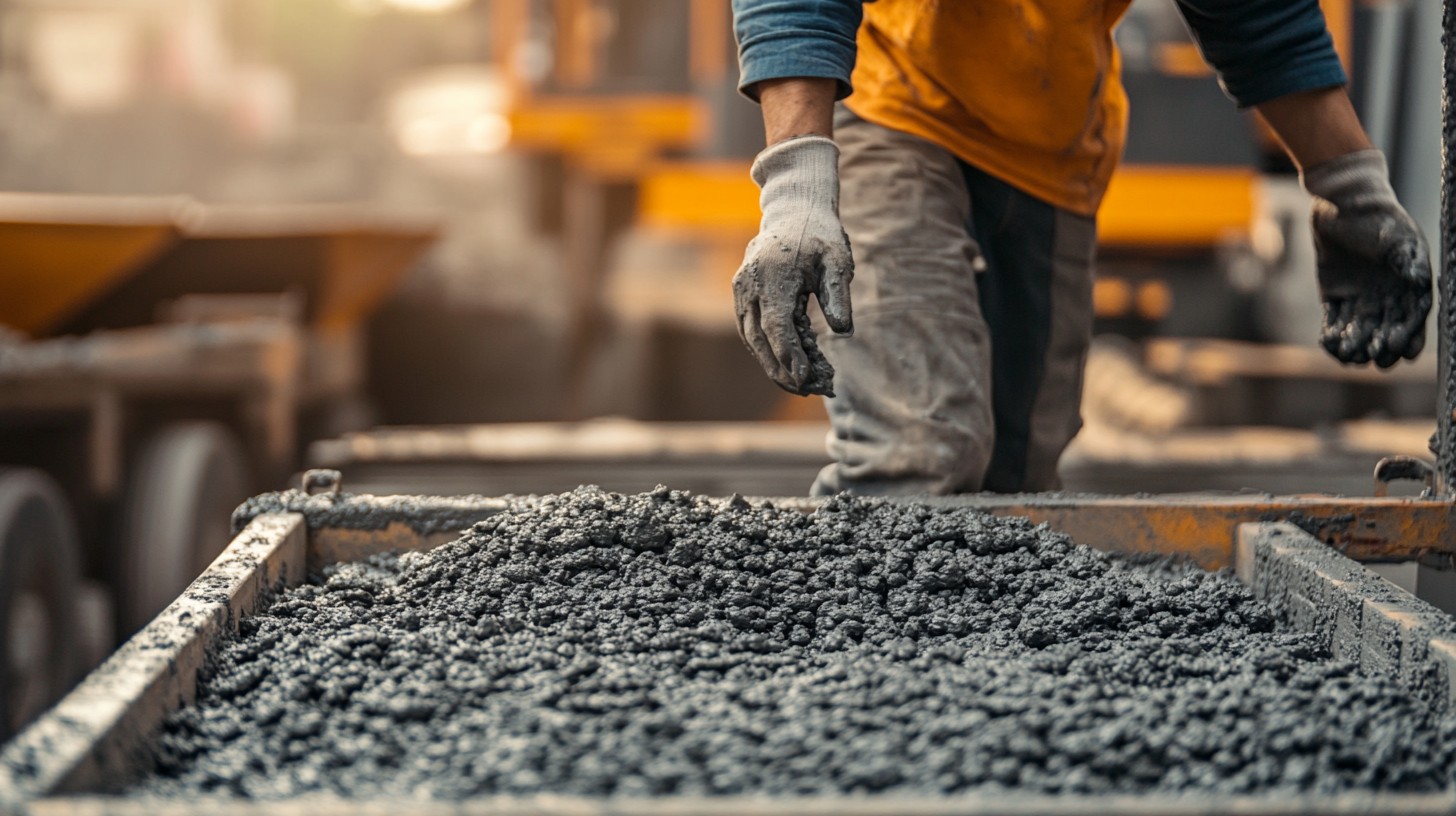
हिंदी में पढ़ने के लिए मेनू बार से हिंदी भाषा चयन करें।
Imagine a world without cement. It’s almost impossible, isn’t it? Roads, buildings, bridges – the very fabric of modern civilization is built on this one essential material. But have you ever wondered how cement became so pivotal to human progress? Or how its future is evolving as the world seeks more sustainable solutions? The global demand for cement is rising, but with it comes a challenge – how can we meet the ever-growing needs while ensuring a greener, more efficient future?
In the next few moments, you’ll be taken on a journey into the world of cement. We will unravel its history, its role in today’s global economy, and look ahead at how innovations in cement production are shaping the future of construction. Let’s dive deep into this fascinating world.
Cement: Introduction
Cement, often referred to as the “building block” of modern infrastructure, is a fine powder that, when mixed with water, forms a paste that binds construction materials together, hardening over time into solid structures. It’s an essential component in concrete, which makes up roads, buildings, bridges, dams, and more. The global reliance on cement has led it to become one of the most widely produced materials in the world. From skyscrapers to the smallest buildings, cement is everywhere.
Historically, cement production dates back thousands of years, with the ancient Romans using a form of concrete for their architectural wonders. However, it was the invention of modern Portland cement in the 19th century that revolutionized the construction industry. Today, it serves as the foundation of nearly every major construction project globally.
Worldwide Demand and Supply of Cement
The cement industry is a massive global operation, integral to the infrastructure of every country. According to recent reports, the global cement market is valued at over $350 billion. The demand for cement is directly tied to global economic development, especially in construction-heavy countries. As urbanization increases and emerging economies develop, the need for cement continues to grow.
Global Demand:
- Asia-Pacific Region: This region, particularly China, is the largest consumer and producer of cement. With rapid urbanization and industrial growth, China’s cement consumption accounts for nearly half of global demand.
- India: Following China, India is one of the largest cement markets, with increasing demand due to its massive infrastructure development programs.
- Africa: Countries in Africa are experiencing a boom in cement consumption due to urbanization and growth in the construction of roads, bridges, and residential buildings.
- North America and Europe: These regions show steady demand, with major cement consumption driven by infrastructure rehabilitation and the construction of new commercial buildings.
Global Supply:
On the supply side, cement is produced in nearly every country. The top 10 cement-producing countries make up about 70% of the total global supply, with China, India, and the United States leading the way. The supply chains are complex, as raw materials must be transported to plants that are often located near construction zones, minimizing transport costs.
Raw Materials for Cement Production
Cement production relies heavily on natural resources. The primary raw materials used in cement manufacturing are:
- Limestone: The main ingredient, providing calcium carbonate.
- Clay: This provides silica, alumina, and iron oxide, which are necessary for the chemical reactions in cement.
- Gypsum: Added to control the setting time of the cement.
- Other Materials: Depending on the specific type of cement, materials like fly ash, slag, and natural pozzolans may also be used to improve strength, workability, and sustainability.
These raw materials are sourced from quarries and mines located in different parts of the world. India, China, the United States, and Brazil are among the top producers of these essential ingredients.
Global Cement Production Process
The process of manufacturing cement involves several critical steps:
- Extraction of Raw Materials: Limestone and other materials are extracted from quarries through blasting and excavation.
- Grinding and Mixing: The raw materials are finely ground and mixed in precise ratios.
- Heating in a Kiln: The mixture is heated in a rotary kiln at temperatures of around 1,450°C to produce “clinker,” the core component of cement.
- Grinding the Clinker: The clinker is then ground into a fine powder, and gypsum is added to regulate the setting time.
- Packaging and Distribution: The finished product is packed into bags or stored in bulk for transportation.
This traditional process, though effective, has significant environmental implications due to the high energy consumption and carbon emissions produced, especially during the clinker production phase.
Leading Cement Companies Worldwide
Several global giants dominate the cement industry, leading innovation and shaping market dynamics. These include:
- LafargeHolcim: Based in Switzerland, LafargeHolcim is the world’s largest cement producer, with a massive portfolio of cement, concrete, and aggregate products.
- China National Building Material (CNBM): As China’s largest cement producer, CNBM holds a substantial share of the global market.
- HeidelbergCement: A German company that is one of the top cement producers worldwide, particularly influential in Europe.
- Anhui Conch Cement: Based in China, this company is the largest cement manufacturer in the country and one of the largest globally.
- UltraTech Cement: The largest producer in India, UltraTech Cement has a significant presence in the global market as well.
These companies have extensive operations in multiple countries, helping them maintain leadership in both production and innovation.
Research and Development in Cement: Innovations for the Future
While traditional cement production has served us well, there is a growing need for more sustainable alternatives. Research and development in the cement industry is now focusing on minimizing the environmental impact while improving efficiency and performance.
Key Areas of Research:
- Carbon Capture and Utilization (CCU): One of the biggest challenges in cement production is the high level of carbon emissions. Companies are investing in technologies that capture CO2 and either store it underground or convert it into useful byproducts.
- Alternative Raw Materials: Researchers are exploring alternative materials, such as fly ash, slag, and even recycled concrete to reduce dependence on traditional raw materials like limestone. These alternatives can help lower CO2 emissions and conserve natural resources.
- Low-Carbon Cement: Companies like LafargeHolcim and Cemex are working on low-carbon or even carbon-neutral cements that use different ingredients and production methods to cut down on emissions. Geopolymer cements, which use industrial byproducts like fly ash, are also gaining attention as a sustainable option.
- 3D Printed Concrete: This innovative technology is being researched for its potential to revolutionize construction. 3D printing can drastically reduce material waste, speed up the construction process, and enable complex designs that were previously impossible.
- Nanotechnology: Using nano-engineered additives in concrete can significantly enhance its strength, durability, and longevity, providing more robust and sustainable structures.
Research Collaborations and Innovation Hubs:
Several global organizations and institutes are leading the way in these research initiatives. Innovandi, the research arm of the Global Cement and Concrete Association (GCCA), is fostering collaboration between companies, academic institutions, and startups to develop new technologies for sustainable cement production
Investment Opportunities in Cement
The global push towards sustainable development and green technologies is creating numerous investment opportunities in the cement industry. As governments worldwide impose stricter environmental regulations and build infrastructure for green buildings, companies that adopt innovative, low-carbon cement production methods stand to gain a competitive edge.
Investors can look to companies that are at the forefront of sustainable cement production. Firms involved in the development of carbon capture technologies, recycling concrete, and the manufacturing of green building materials offer strong growth potential. As cement plays an essential role in construction, especially in emerging economies, investing in companies committed to innovation and sustainability could offer long-term financial gains.
Conclusion
The cement industry, despite its environmental challenges, continues to evolve. With demand rising due to global urbanization, new technologies and innovations are reshaping how we think about cement. From carbon-neutral cement to 3D printing, the future of the industry lies in sustainability and efficiency. The cement sector remains one of the most important industries globally, and its role in the future of infrastructure development cannot be overstated.
As we move forward, the next generation of cement will not only be stronger and more durable but also more environmentally friendly, playing a vital part in the creation of smarter, greener cities. For investors, the opportunity lies in supporting these innovative solutions and in recognizing the potential of a cleaner, more sustainable future in the world of cement.




































































